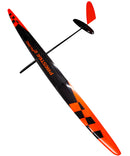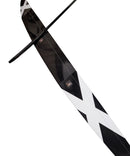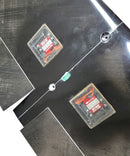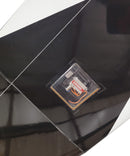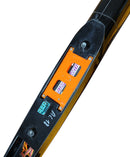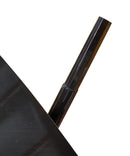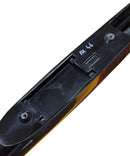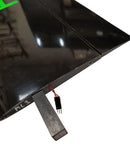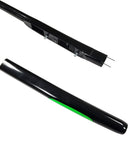Description
PRESTIGE 2PK PRO F5J Light, Reflex Orange/Carbon, All servos installed
F5J Light version , RTF weight 1200g – 1300g(42-44oz), stiffness spar– 12%
-30mm nose
-Ailerons, IDS and servos installed. KST X08H
-Flaps, IDS and servos installed. MKS 6120
-Fuse, tray and servos installed. MKS HV6110
-Includes protective covers.
CAN ANYTHING BE BETTER THAN EXCELLENT?
Yes it can! - PRESTIGE 2PK PRO
Many pilots have been asking us for a long time whether we are preparing a new model.
It is not our habit to produce a new model often just to increase the sales of our models. We believe that every new model must be better, more powerful. The customer should not be disappointed with the performance and improvements. Every customer should feel the improvement and have a good feeling that their invested money is really worth it.
There is a lot of pilots that very often buy every new model that comes on the market hoping that it will have a miraculous feature just because it is new.
In order to achieve peak performance, a pilot should fly with one type of model for a long time and become "fused" with it.
Of course, the biggest credit for all the changes and improvements goes to our designer Philip Kolb. We really thank him for that. We also thank Benjamin Rodax, who designed more models for us with Philip .
Philip Kolb always designed a model for us that outperformed current models and maintained its superiority for many years.
We have had countless responses from pilots who have "switched" to the Prestige 2PK and their performance have increased rapidly due to the performance and very friendly features of the model.
He would never design a model for us that he was not sure would not improve upon the previous model.
That this is true is also evidenced by the first reactions of some top pilots who had the option to try the Prestige 2PK PRO and enjoy flying with this novelty
We probably don't need to mention that the entire model is produced in electrically heated aluminum molds, which are produced by very precise CNC machines. The wings, rudder and elevator are manufactured using the latest FRC (Full Rohacell Core) Technology. The fuselage is also inflated at high pressure in electrically heated aluminum molds. Which guarantees high strength at low weight .
PRESTIGE 2PK PRO will use all its advantages in all categories of F5J, GPS light and F3J. After some time ago other manufacturers practically stopped the development of new F3J models, the Prestige 2PK and Prestige 2PK PRO are the only top models on the market for the F3J category.
We wish to all Prestige 2PK PRO users much success and only the best experiences.

Since the Prestige 2PK was launched in 2019, it has become one of the most widely used models in F5J.
Besides the aircraft's performance and the exceptionally high standard of manufacture, the model's success above all is due to its ease of handling. I am convinced that this is the main reason for the popularity of the Prestige-2PK. Its well-balanced control authorities and the easy handling qualities result in a low pilot workload. Hence the pilot can get out a lot of performance of the plane even in a difficult and stressful competition surrounding.
The question is:
"How can we improve such a plane?“
Competition pilots always strive for higher performance.
However, this must also be easily retrievable in competitive situations!
Accordingly, the primary goal in the development of the Prestige 2PK Pro was to allow an increase in performance without trade-offs in handling.
One of the main reasons for choosing a wingspan of "only" 3900mm for the Prestige 2PK was to ensure sufficient agility when thermaling. In combination with a moderate aspect ratio and a high taper ratio of the wings, this resulted in an aircraft that is surprisingly agile around the longitudinal axis.

Increasing the wingspan is the most effective way to optimize the performance (L/D) of an airplane. Therefore, the first measure in the design of the Prestige 2PKPro was to increase the wingspan to the maximum 4000mm allowed. At the same time, a careful redesign of the airfoil section promised further performance gains.
For this purpose, it was necessary to make the airfoils even thinner in order to save additional drag, especially in the medium lift coefficient range.
Over large extents of the outer wings, the airfoils are now 0.3 percent thinner than on the Prestige 2PK, culminating in a tip airfoil being only 5.8 percent thick anymore.
This measure mainly results in better legs thus performance gains when hunting for a thermal or coming back home from far downwind.
Nevertheless at the same time the highest caution is also required here!
One must be very careful when thinning out the airfoils to a substantial degree to avoid that the maximum achievable lift does not suffer. For tight thermal turns, even with light F5J aircraft, CL values of up to 1.3 must be achievable.
The stall characteristics must be gentle and the stall should occur as late as possible.
In order to be able to control the stall characteristics as optimally as possible, the optimization problem was equally addressed by two possible influencing variables.
The first of these variables is the leading edge design of the airfoils.
In general the curvature of the first chordwise 10 to 15 percent of the airfoils upper side is crucial for its stall characteristics.
Therefore thinning out the airfoils to a portion where the leading edges get too sharp certainly reflects a kind of counterproductive measure. On the contrary putting emphasis on extreme late stall behavior will result in airfoil designs with a higher percentage of thickness. These airfoils then might most probably lack performance in fast glide and maximum L/D.
This is where the second influencing variable comes into account: The washout twist distribution.
To be able to combine both, the gain in performance parameters and gentle stall characteristics, a nonlinear geometric washout twist was calculated and implemented.
For aircraft which are primarily operating in the higher lift coefficient regime this is a very effective tool to mitigate tip stall tendencies without the necessity to use wider chords close to the wing tip.
A wider chord on the wingtip can also mitigate tip stall tendencies without the need of using thicker airfoils, but will have the disadvantage that more mass has to be built into the outer wing panels due to higher component volume – and this higher mass certainly will negatively affect the planes` agility.
Concerning the washout twist distribution, it was quite astonishing that twisting the central area of the wingtips was clearly more necessary to avoid tip stalls than the outermost tips. Hence the washout twist distribution was chosen nonlinear.
As a result to this, the Prestige 2PK Pro shows better performance values up to a flight speed of 70km/h than the Prestige 2PK. The speeds above are very rarely flown in F5J and luckily an „off-design“-area for F5J and also even for GPS-Lightclass aircraft.
Fig.02: L/D-values for typical F5J and typical GPS-Lightclass wing loadings.
Note: fuselage drag and parasitic drag not accounted!
With the resulting longer span and higher aspect ratio of the Prestige 2PK Pro wing it was also required to rearrange the tail moment arms in order to keep similar tail volumes as on the Prestige 2PK.
As the vertical tail volume is reduced by a greater portion than the horizontal tail volume while increasing the wing span without changing the tail moment arms, both tail moment arms were increased by different numbers. Thereby the fin was moved 92mm more downstream and the stabilizer 65mm more downstream to reach equivalent tail volumes as on the Prestige 2PK.
As Samba Model is able to really build light tail feathers, it will still work to keep the inertia values of the tail units low. The big advantage in this matter, when elongating the tail boom, is that the spiral stability values of the aircraft will increase. Consequently the Prestige 2PK Pro should be able to perform steeper thermal turns without any tendencies of the plane to spiral in.
Out of this reason I am clearly recommending the 8 degree tip-joiners for the very light and V-tail aircrafts!
Below you can find the most important flight mechanical values for both planes using either 6° or 8° joiners.
Prestige 2PK (6° joiners)
Vh: 0,45
Vv: 0,025
EDA: 6,94°
B: 2,95
Prestige 2PK (8° joiners)
Vh: 0,45
Vv: 0,025
EDA: 8,40°
B: 3,57
Prestige 2PK Pro (6° joiners)
Vh: 0,45
Vv: 0,025
EDA: 7,00°
B: 3,13
Prestige 2PK Pro (8° joiners)
Vh: 0,45
Vv: 0,025
EDA: 8,49°
B: 3,80
Fig.03: Minimum and Maximum AUW for F5J and GPS-Triangle Lightclass.
Payment & Security
Your payment information is processed securely. We do not store credit card details nor have access to your credit card information.











